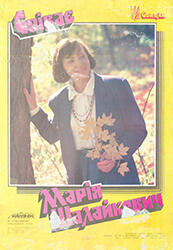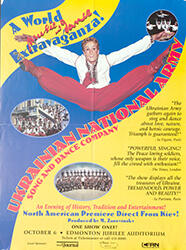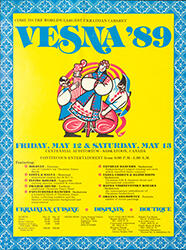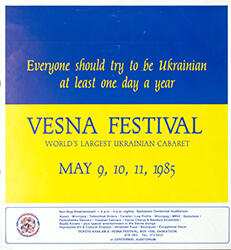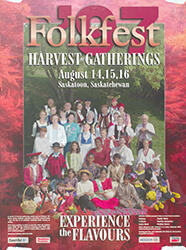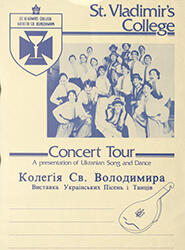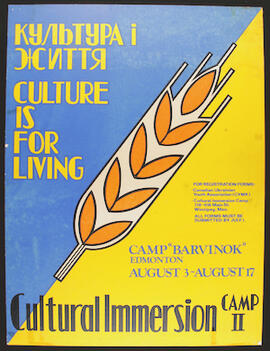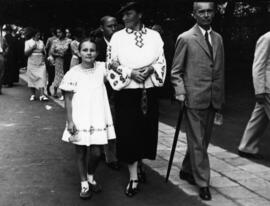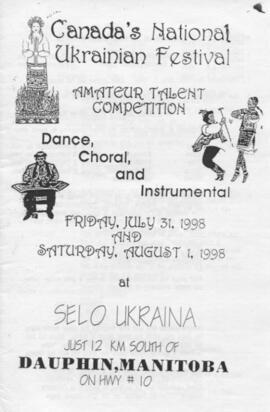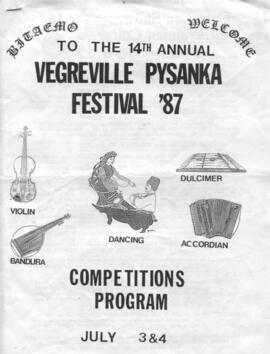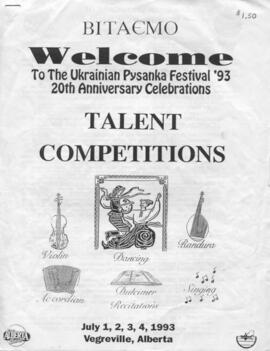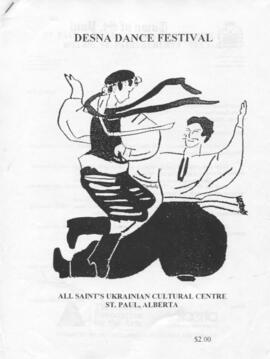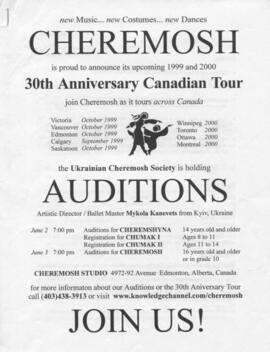Poster advertising for Ukrainian singer Mariia Shalaikevych. Text in Ukrainian.
Poster advertising for Folkfest '95 in Saskatoon, Saskatchewan. Even to take place August 17-19, 1995.
Poster advertising for a performance by the Ukrainian National Army Song and Dance Company. Event on October 6 in Edmonton, Alberta.
Poster advertising for Ukrainian cabaret Vesna. Even to take place May 12 and 13, 1989 in Saskatoon, Saskatchewan.
Poster advertising for the Vesna Festival: the World's Largest Ukrainian Cabaret. Event to take place in Saskatoon, Saskatchewan on May 9-11, 1985.
Poster advertising for Folkfest '97 in Saskatoon, Saskatchewan. "Harvest Gatherings; Experience the Flavours". Event to take place August 14-16, 1997.
Poster advertising for the 1999 Pan-American Games in Winnipeg, Manitoba.
Poster advertising a concert tour by St. Vladimir's College.
Poster advertising for the Hoosli Ukrainian Folk Ensemble's 20th anniversary gala concert. Guest artists include the Rusalka Ukrainian Folk Ensemble, and the St. Vladimir's College Ensemble. The poster is signed with many signatures.
Poster advertising for "Chornozem" at Massey Hall in Toronto. Event to take place October 7,1984. Event presented by Ukrainian National Youth Federation of Canada.
Культура і життя
Culture is for living
Camp "Barvinok"
Edmonton
August 3 - August 17
Cultural Immersion Camp II
The Viter Ukrainian Folk Group Choir was a large group project, supported by KuFC equipment and logistics. Graduate students from the Fall 2014 Folklore Research Methods class (MLCS) taught by Andriy Nahachewsky attended a number of rehearsals and performances by the Viter Ukrainian Folk Choir of Edmonton. Students gained experience using recording equipment, conducting interviews and then published their findings. They produced two short videos documenting the choir on stage and as a community.
Students: Nataliya Bezborodova, Larisa Cheladyn, Kateryna Kod, Kelci Mohr, Deepak Paramashivan, Allison Sokil and Dana Wylie.
Aside from two films, there are many photographs in the collection.
This is a collection of folklore materials and family archives from Roman Onufrijchuk, a key leader in the 1970s and 1980s "Cultural Immersion Camps" organized by CYMK, which involved many future leaders of the Ukrainian community across Canada. This unique and large collection highlights one family's experience in Ukraine, in the Displaced Camps in Europe, and in Canada. The Onufrijchuk fonds includes family photographs, correspondence, souvenirs, publications and a large collection of embroideries.
Sans titre